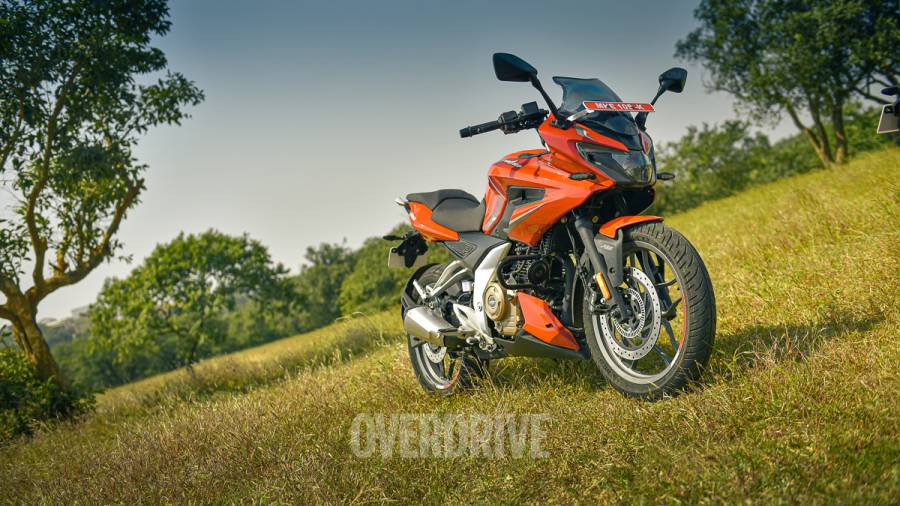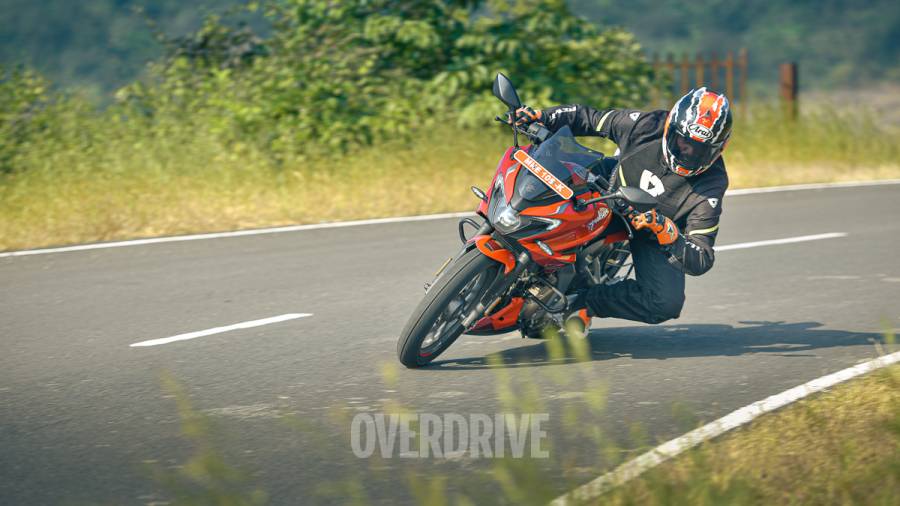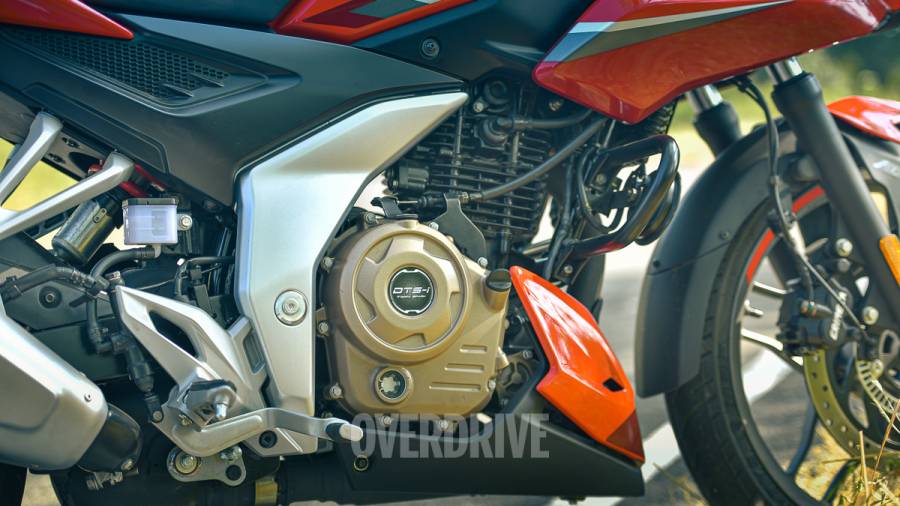Bajaj Pulsar N250 and F250 road test review
I still remember being a college kid smitten by the Hero Honda CBZ. Its sporty silhouette, the upswept exhaust and the perceived performance of its 156cc engine was the stuff of dreams for kids like me. But in 2001 arrived the Bajaj Pulsar. It had a simple round headlight, yes, but that (now iconic) muscular tank, the pointy tail and the number on it - 180 - still gives me goosebumps. 20 years on, times have changed. "Definitely Male" sounds sexist today, and a 250cc badge probably doesn't stir up the same kind of emotions anymore. And yet, the whole world sits up and takes notice when there is a new Pulsar in town.

Bajaj Pulsar F250 & N250 Design Details
Even this time there are two new Pulsars, but unlike 2001, these share a common engine and differ instead on the body styles. And the Pulsar's tried and tested body styles at that - a street naked in the N250 and a quarter-faired F250. They won't replace any of the existing Pulsars right away, but this design theme is likely to spawn smaller Pulsar models in the coming years.


You don't have to see these motorcycles in the flesh to realise that the new Pulsars appear a lot leaner than their predecessors. They are still in the same weight class though, weighing 162kg and 164kg respectively. If you have been looking for a Bajaj motorcycle that is lighter than the Dominar 250, either of the Pulsars would be a good choice.



Like the Dominar, the new Pulsars create an interplay of matte black and gloss-finished colour panels for a sporty two-tone effect. Going a step further, the Pulsars also create a floating effect for some of the body panels like the mud flap, belly pan and tail section, and that looks give smart. The taillight has been adorned with three different texture styles which create a stardust pattern similar to the taillights of the Mercedes-Benz E-Class, for example, and that adds a premium touch.



The facia of the N250 is very much like the much-appreciated design of the Yamaha FZ 25/MT15, but I believe that Bajaj should have stuck to a two-pot vertical arrangement for the F250's headlight to go with the theme set by the 220F. A single projector bi-beam LED was chosen as a common element on both bikes to keep costs low. The throw and spread of these headlights are pretty average and a slightly yellower colour temperature would have been better for our roads.


The graphics look a bit overdone to me, more so on the red option, and a minimalist design theme like the yesteryear Pulsars would have been more relevant in today's times, methinks. Save for that, the new Pulsars look smart and up with the times and much-improved finishing levels make them appear and feel more premium than what their price would suggest.

Bajaj Pulsar F250 & N250 Ergonomics, Switchgear and Seating
The iconic shape of the Pulsar's tank has made way for a sleeker design, much like the NS/RS200, with well-defined knee recesses that aid better grip for the rider while cornering or braking. The tank capacity is 14l, which is on par with the competition, and our tests show that a 500km range from either of the Pulsar 250s seems achievable. The tank interfaces with the new split seat arrangement far better than the previous Pulsars. The downside is that the new Pulsars, especially the F250, don't have the big bike feel between the legs, but the ergonomic advantages are far more welcome. The narrow seat and its low placement of 795mm should also make it easy for most male and female riders. The relatively more low set pillion footpegs also make getting astride the error seat an easier affair and the geometry is quite comfortable too.


The F250 needs you to reach out for the handlebars a little bit more than the N250, making for a marginally more aggressive riding style. All controls fall easily at hand, but we found the switchgear on the right-hand side to be a loose fit on both the motorcycles we rode.

The two Pulsars also have better cornering clearance than before thanks to the revised footpeg and exhaust geometry. While the pegs did scrape often on the tight yet fast corners at the Bajaj test track in Chakan, they offer plenty of cornering clearance while sport riding around the mountain roads.
Bajaj Pulsar F250 & N250 Suspension, Brakes, Ride and handling
The ground clearance and wheelbase are comparable to the 220F and Bajaj has stuck to slimmer tyre profiles than the competition to safeguard the easily flickable nature of the Pulsars. The N250 in particular is very sharp on the turn-ins and can even give the 200NS a run for its money, despite using a tubular cradle frame instead of a perimeter frame that does duty on the NS or RS. Its slightly rear-biased weight distribution allows you to put more weight on the front and still enter corners very confidently. The F250 on the other hand, with its quarter fairing, achieves an almost 50:50 weight bias, making fast corner entries feel relatively more stable than its naked sibling.


The suspension employs standard 37mm forks up front and a pre-load adjustable mono-shock at the rear and out of the box the suspension and the MRF tyres work in excellent harmony from a sport riding perspective. Out on the track, extreme leans show the limitations of the setup as the tyres start squirming and the suspension feels squishy at the front. But around mountain roads, the Pulsars manage excellent dynamics and corner speeds and will be great teachers for newbies wanting to take up sport/track riding. The suspension impresses on poor road conditions too and feels pliant on most kinds of surfaces that the Indian roads will throw at it.

To further optimise costs, Bajaj has gone with a braking system - Grimeca - which replaces the Bybre system from Brembo. (Grimeca is an Italian brand that is now owned by Endurance Systems, which is Bajaj's long-time supplier of wheels and suspension components). The new brakes leave no room for complaint. Because there is only a single-channel ABS, the rear brake has a softer bite, while the front is predictable and sharp enough to do duty on sportier machines.

Simple two-finger braking is usually enough to get a good tip in for fast corner entry and a smooth fuelling and well-tuned gearing ensures that maintaining steady throttle through the corner and powering out quickly is easily achievable.

Bajaj Pulsar F250 & N250 Engine, Specifications, Performance and Fuel Economy
The new 249cc engine is 10-degrees more upright than the outgoing 220cc mill from the 220F. The revised form left very little room for Bajaj to plonk in a third spark plug. Furthermore, Bajaj has managed to achieve the ideal air-fuel mixture and emissions required to stay within the stringent BSVI norms with the twin-spark setup and therefore the third spark wasn't necessary. The air filter has been repositioned to sit below and in parallel to the rider's seat. There is no airbox anymore and, therefore, getting a conical performance filter (a common mod on many Pulsars) won't be easy. The battery, in turn, has been repositioned to go below the pillion seat and the terminals are easily accessible too in case you need to use a battery tender.

The new engine doesn't set any new benchmarks in terms of power or torque outputs, but it is easily the most refined engine to be used in a Pulsar so far. To that effect, it features an offset crank and a spring-loaded final drive for the balancer shaft. Even the fuel injection system hardly makes a sound on the boot-up. Though the engine isn't as quick as its rivals on outright acceleration, it is tuned for a flat torque curve which ensures that you can power out of corners or pull overtakes at city and highway speeds in a quick, predictable manner.


On the highway, the engine is geared to cruise comfortably at 110kmph at 8,000rpm and the pull from 100-120kmph is excellent too. Like its rivals, riding past 130kmph takes some effort as the engine loses steam beyond 125kmph, but with the wind in your favour seeing 140kmph on the clock is possible. In terms of true speed - the N250 achieves a top whack of 130kmph, while the F250 with the aid of its fairing manages 133kmph, which is about 12kmph more than the true top speed of the 220F. The fairing and the windscreen are only marginally better at wind deflection though and should you go touring, one will need a screen that is more upright to cut the wind blast after 110kmph. Long distances in the saddle of these Pulsars don't feel cumbersome either, and the suspension complements that comfort further.

So be it sport riding around winding roads, doing the occasional track days, or simply enjoying these machines on the road - the new Pulsars have all the bases covered that made their predecessors such a hit.

Verdict
The Pulsar brand name is now older than many of the riders who will buy either of these 250s. And sure, that new-age audience is likely to expect a lot more from a motorcycle of this order. But honestly, save for the single-channel ABS, its kit is pretty much on par with its Japanese rivals. And so, though it doesn't set any new benchmarks on that front, it makes up for it by being way more accessible on the price. Sure, in today's age of easy monthly instalments, a bit more kit for a bit more money wouldn't have pinched the buyer, but even with what it has, the new Pulsar 250 is still an excellent package. And like the original, it does a fine job of making power very accessible to the rider.
Photography Anis Shaikh
Starts Rs 63.6 Lakhs
2925cc
Automatic
194
600
-NA-
Starts Rs 1,38,000
249cc
5-Speed
24.50
21.50
-NA-
Starts Rs 1,40,000
249cc
5-Speed
24.50
21.50
-NA-
Starts Rs 1,02,700
149cc
5-Speed
12.40
13.60
-NA-
Starts Rs 83,042
149cc
5-Speed
12.40
13.60
-NA-
Related Stories
Top Stories
Latest Videos
Most Popular
- Maruti Suzuki Fronx Drive Feature: Switch to Plan B
- Ford India to make a comeback in 2025? New-Gen Endeavour design patented in India
- Maruti Suzuki Brezza emerges as the most successful SUV of 2023
- Nissan Magnite EZ-Shift review - is the AMT any good?
- Hyundai Creta facelift bookings open for token amount of Rs 25,000














